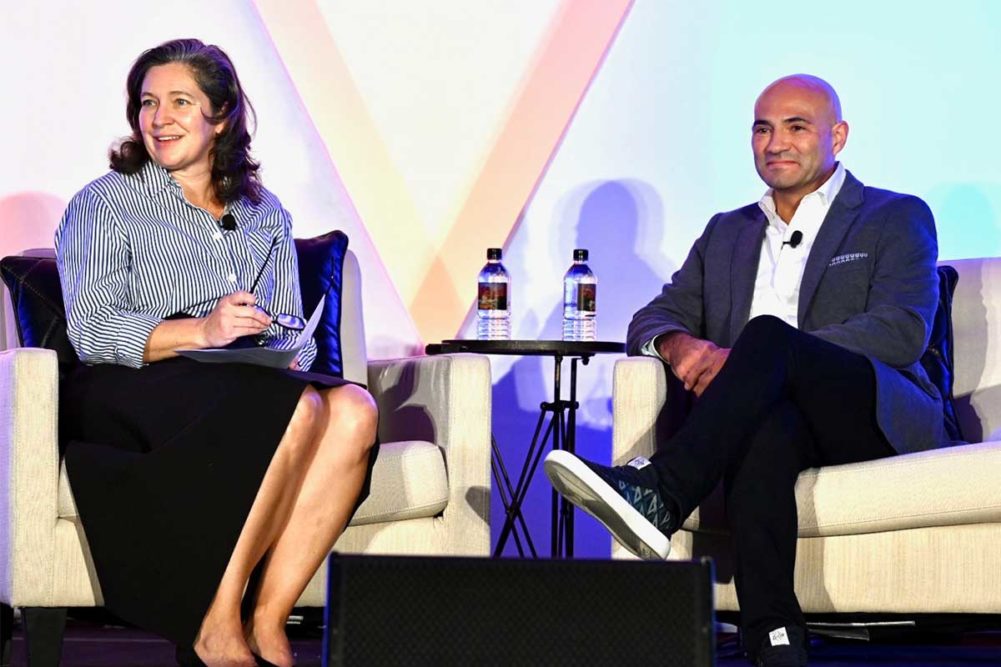COLORADO SPRINGS, COLO. — During the past few years at The Hershey Co., Hector De La Barreda has seen the chocolate and confectionery business reinvent itself by diversifying its product portfolio and making strategic acquisitions as part of the company’s overall effort to become a leading snacking powerhouse.
“That vision of becoming a snacking powerhouse; I would say today has been accomplished,” said Mr. De La Barreda, senior vice president, chief global business platforms and process optimization officer at the Hershey, Pa.-based company. “However, we are still on our way to becoming the market leader.”
He noted Hershey’s Salty Snacks division now has more than $1 billion in sales, and its goal is to reach $3 billion in the next few years.
“Inside The Hershey Co., you cannot imagine how exciting it is to be a part of this Salty Snacks division,” he said. “It’s something that everyone wants to be part of it. It’s dynamic. It’s fast-moving.”
During SNAC International’s recently held Executive Leadership Forum, Mr. De La Barreda attributed this transformation to two big moments in Hershey’s recent history and to Michele Buck, the company’s chairman, president and chief executive officer whose vision sparked the initiative.
The first moment involved the acquisition of Amplify Snack Brands in 2017. The $1.6 billion purchase of the Austin, Texas, snack maker added SkinnyPop, Paqui and other snack brands to its portfolio as well as manufacturing capabilities and complemented Hershey’s burgeoning snack mix and meat snack products at the time.
“It really gave us the opportunity to enter a new industry and a new category to learn and to see if we had the ability and the right to win,” Mr. De La Barreda told Christine Cochran, president and CEO of SNAC International, who moderated the session.
The second big moment involved the 2021 acquisition of Dot’s Pretzels and Pretzels Inc., a major co-manufacturer of pretzels at that time.
Mr. De La Barreda called the purchase a “game changer.” At that time, Dot’s was the fastest-growing brand in the pretzel market and represented 55% of the growth of the entire category that year. Moreover, Bluffton, Ind.-based Pretzels Inc. brought in much-desired manufacturing and supply chain capabilities to drive capacity and bolster its presence in the snack market.
The next step involved folding the acquisitions into a focused snack division.
“We had to put four companies into one,” Mr. De La Barreda recalled. “Each one had its own culture and spirit. In the end, it’s all about focusing on winning the heart of the consumer and driving value.”
Mr. De La Barreda also shared several of the lessons learned and successful strategies employed by Hershey’s journey to becoming a snacking powerhouse.
“We always stayed true to our mission, which is making ‘more moments of goodness’ and putting people in the center of everything that we do,” he said.
In building the snack division, Mr. De La Barreda said, Hershey first focuses on identifying new eating and snacking occasions for its products.
Second, it emphasizes the development of new products and searches for acquisitions that are incremental and complementary to its core chocolate business.
Third, Hershey has entered synergistic product categories such as popcorn, pretzels and puffs that offer the greatest potential for accelerated growth in the core salty snack category.
“This opportunity that we have of owning the sweet and salty [snack segment] is very interesting,” he said, pointing to Dot’s Cinnamon and Sugar Pretzels and Reese’s Popcorn as prime examples of its newer sweet and salty snack items.
Overall, Hershey is much different than a few years ago. Mr. De La Barreda said the business is harnessing its strengths as a 130-year-old company and a startup in many ways.
“We started it by leveraging the power of ‘and.’ We are an experienced ‘and’ a young company,” he explained. “Because we have expertise, agility and speed, it’s really helping us create a new culture that’s pushing us to do bolder things with bigger and better actions. This strength and agility are what’s needed right now in an environment that is very dynamic and very competitive.”
A seasoned executive specializing in general management, strategy and operations, Mr. De La Barreda also passed on leadership advice from working at Fortune 500 companies across the globe.
“You need to be aware of everything that is out there,” he said. “In order to compete, control what you can control, and having the agility to evolve and acquire new skills makes for better leadership.”





